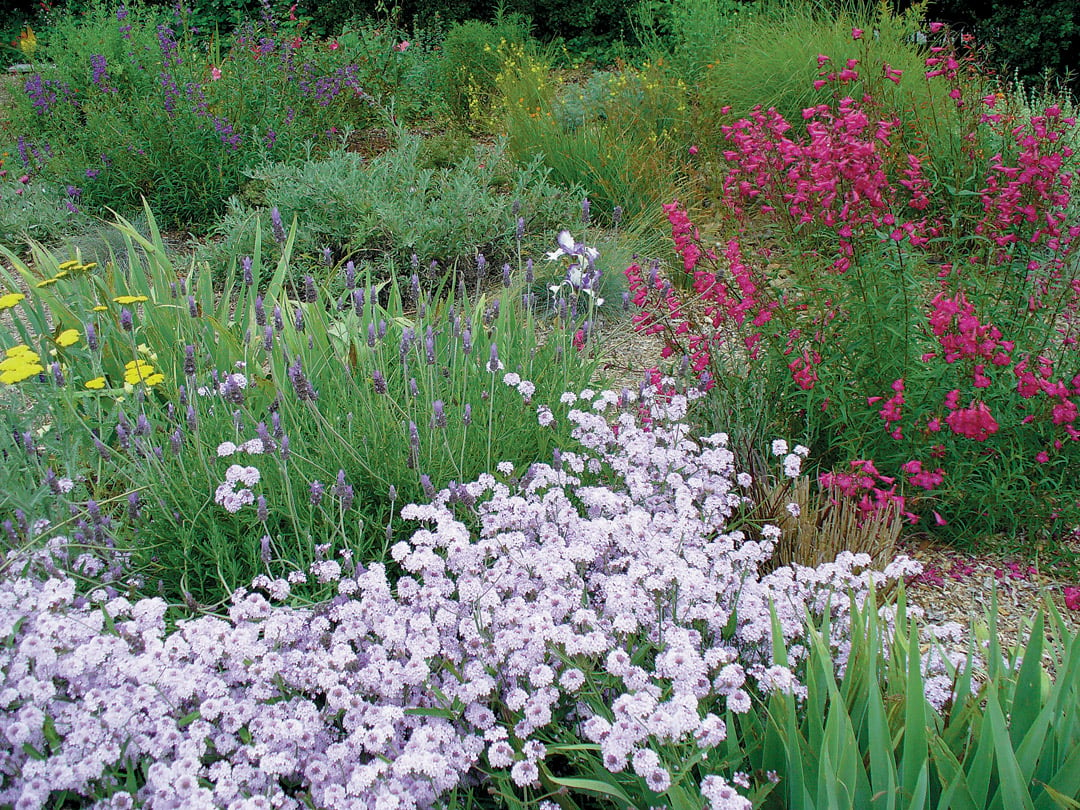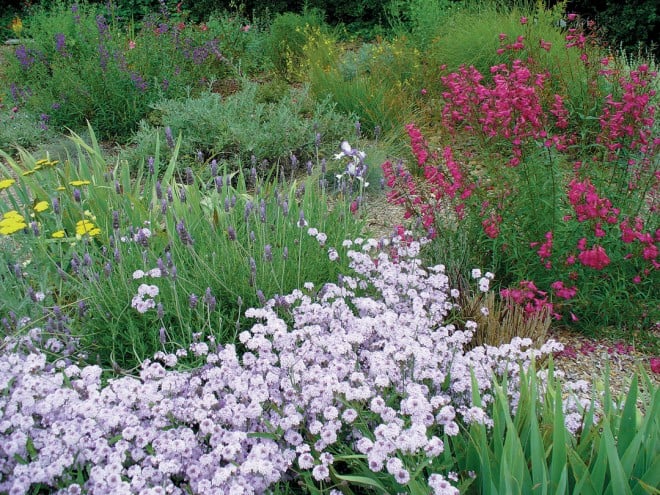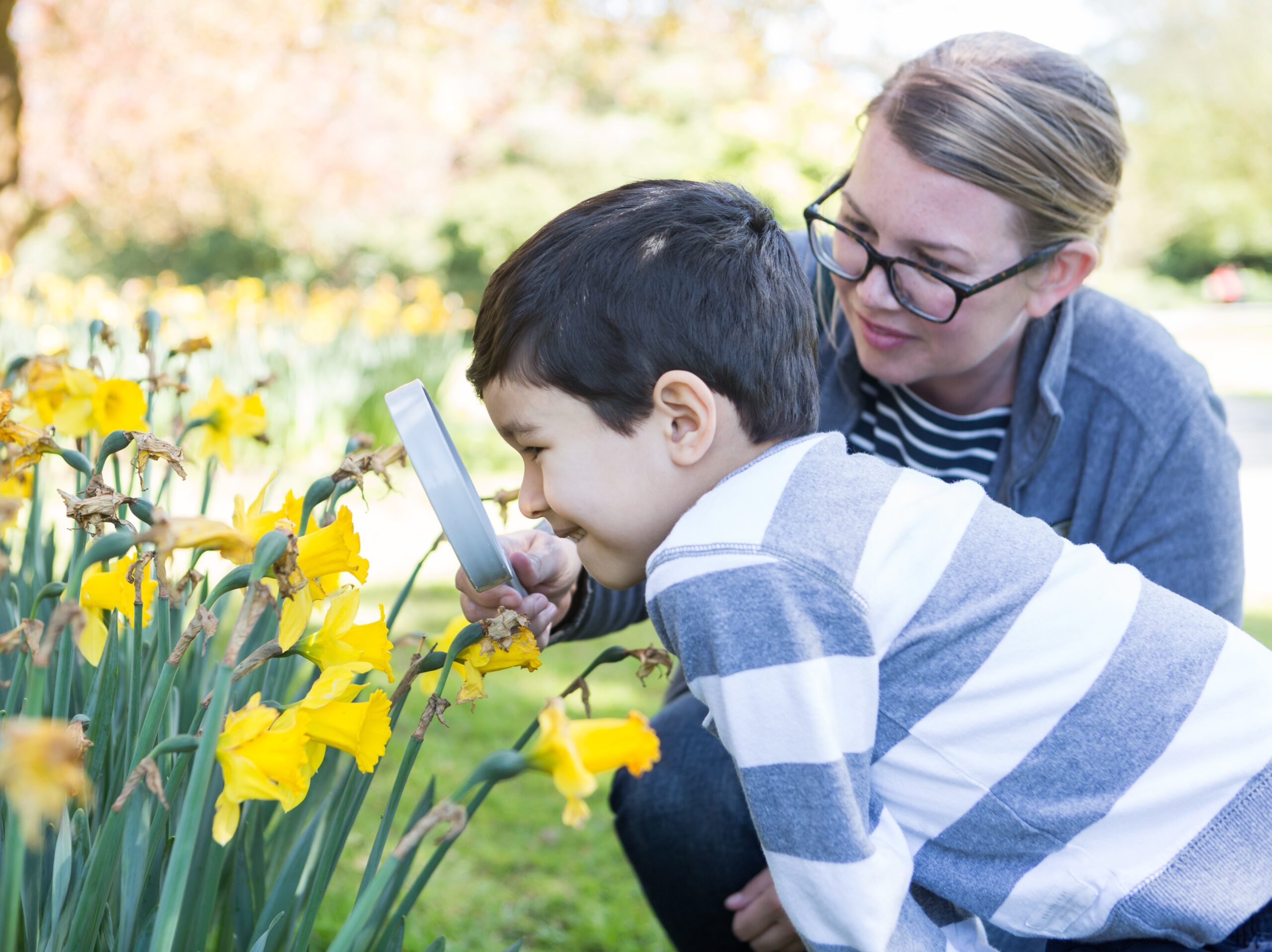
New Palo Alto Demonstration Gardens

Contributor

Where do you start when you want to make a public garden? In 2003, a group of twenty Santa Clara County Master Gardener volunteers looked for a site to create a new public demonstration garden that would have a two-fold purpose—to show both edible landscaping and water-wise ornamental gardening.
Of several possible locations for a new public demonstration garden in Palo Alto, the most appealing was located at the edge of a city park, bordering an area of community gardens; the park was in an attractive, older neighborhood. The garden site had gone from city maintenance yard to weedy dog run. The city offered to co-sponsor our garden by providing the land and installing a water line. Our own hard work would be needed to prepare the soil, put up fencing for the edible garden area, build a tool shed, make signs-and all the other tasks that go into creating a public garden. We enlisted spouses, friends, and children to help us with some of the work. Nothing is as inspiring as a new project!
Our goal was to make an ornamental stroll garden that would remain attractive all year and require little summer irrigation once the plantings were established. It would showcase plants that we wanted to encourage homeowners to try in their gardens, as well as cultural techniques for dry-summer gardening. Native California and other Mediterranean climate plants were the obvious choices.

Meeting the Challenges of Site and Budget
The site enjoys good sun exposure and is bordered on the west by a dense planting of street trees, mostly coast live oak (Quercus agrifolia). A dirt road loops through the area, making a natural border for the edible display gardens and leaving a smaller area, closer to the street, for the ornamental stroll garden. The design for the new garden introduced a series of long, sinuous beds separated by ample paths. To alleviate the poor drainage, characteristic of the native clayey soils on the site, the beds would be mounded with soil brought in for the purpose.
The approximately 3,500-square-foot portion selected for the ornamental garden was covered with weeds, mostly field bindweed (Convovulus arvensis). Controlling the existing weeds became our first task. We collected large sheets of cardboard from appliance stores and the city’s recycling yard, and laid them in a flat layer over the entire area. Then we covered the cardboard with a four- to six-inch layer of wood chips, which were available, free of charge, from local tree service companies who otherwise must pay to deposit their loads at the city dump.
Purchasing soils to make the mounds would have been prohibitively expensive, but we were lucky to find a construction site several miles away; there, we could obtain soil for free, if we would truck it away. Driving a dump truck turned out to be the boyhood dream of one of our gardeners; many loads later we had five mounded beds of gritty soil, perfect for mediterranean-climate plants. The sixth bed received soil from another construction site; this was a sticky, black, adobe soil that is more problematic but serves as a valuable demonstration of which California native plants will grow in heavy clay.
One of the best things about a volunteer organization is the wealth and diversity of talents and creative energies that spring from the group. Someone doesn’t mind making contacts for donations of materials. Another is a competent builder. Muscles are there for digging postholes. Our shoestring budget meant that most plants were donated, home propagated, or grown from seed. One gardener built an attractive information kiosk, and the husband of another added a tool shed.

A Garden Appears
Planting began in late fall. To encourage the development of good root systems, we started with small plants. Most were planted from either four inch pots or one-gallon containers. No soil amendments or fertilizers were used at planting time. The gravelly soil in the raised beds provides the quick drainage that is so important to these plants. Seeds of both native wildflowers and exotic annuals were scattered over the soil and lightly raked in.
Then we waited for the rains to come. By spring, most of the plants were alive but not growing; we decided to add some supplemental nitrogen, in the form of alfalfa meal, to the hungriest. Few of the annuals germinated with that first winter’s sporadic rain. However, we were treated to an exceptionally long wet season during the second winter; many of the annual seeds that had lain dormant for more than a year germinated and grew into a stunning show: California poppy (Eschscholzia californica), Agrostemma, Scabiosa, godetia (Clarkia species), Nigella, Cerinthe, and Ammimajus.
Volunteers hand-watered the beds during the first two summers; newly planted material received watered every two to three weeks. We have now installed two different types of low-flow irrigation systems, which water only once a month during our long dry season. The clay bed with native plants is only watered if the plantings require it. New plants continue to be watered by hand for the first year. We were fortunate to be given a grant for the irrigation costs by the Santa Clara Valley Water District.
We strive to be as thrifty as possible with water, fertilizers and amendments, and garden labor, while maintaining an appealing and colorful garden. All of the beds have plants that provide attractive foliage as well as a long season of bloom. Since its second year, our water-wise garden has been a visual extravaganza, beginning in early spring with spectacular flower color and continuing throughout the year. It has become a place for the public to see low water- use plants in an attractive landscape. A small but dedicated group of gardeners nurtures the garden by weeding, deadheading, and making ongoing plant decisions. The many gray-leaved plants are a good contrast to the dark green background of the live oaks. Color combinations are well chosen, thanks to a member with a terrific sense of color and planting design.
We constantly evaluate the garden and remove plants that have not been successful. We also look for new, climate-adapted plants to showcase. Among the exceptional performers has been the spring blooming African daisy (Arctotis acaulis ‘Purple Torch’), which complements the many early annuals. Later spring standouts are Rosa chinensis ‘Mutabilis’, Nepeta, and Penstemon ‘Garnet’. Verbena lilacina ‘De la Mina’, which was an exceptional performer for the first year, did not survive the winter. Most salvias and penstemons provide a long showy bloom. In the late summer, Pelargonium sidoides and Verbena rigida take center stage.
Field bindweed has been an ongoing problem. Last summer, we followed UC Cooperative Extension advice to sponge glyphosate (sold as Round-up) onto the leaves when the plants were fifty percent in bloom. This spring, we will learn if our eradication program has been a success. The paths have been re-chipped to thicken the mulch layer. We have recently added wood chip mulch to the beds, which will reduce the germination of the annual flower seeds but will help with weed control.
Vandalism has been minimal, and only one large aloe has been lost to theft. Tire tracks are evidence that weekend joy riders have tried our paths. But the many visitors who walk through the garden show us that people do come for their own enjoyment. We hope they are taking home the message that they can have a beautiful garden without a green lawn or other high-water-demanding plants.

Edibles Too
The adjacent edible landscape demonstration garden has been a huge success. We have four international theme beds of vegetables, along with attractive structures and ornamental plants. There is a high-density fruit tree display as well as an area of espaliered apples and pears. The fence is covered with flowering plants and interesting vining edibles. We also have a raised blueberry bed with wattle edging.
The Asian bed combines unusual vegetables like ‘Nan Fong’ Chinese mustard, ‘Red Vine’ Malabar spinach, ‘Red Noodles’ Chinese long beans, and the beautiful red giant mustard. There is even a rice paddy in a half barrel.
Finding showy vegetables for the Mediterranean bed is easy. Many chicories, brassicas, and lettuces offer good form and color. Artichokes ‘Violetto’ and ‘Romanesco’ stand near a red trellis covered with purple hyacinth beans. In all of the edible beds, flowers are planted to attract pollinators and beneficial insects.
The African bed is more challenging. Ruby silk love grass (Eragrostis tef) has fine drooping satiny red seed stalks. Sorghum is a striking ornamental but grew ten feet tall. Roselle produces showy calyxes. We also grow peanuts, pigeon peas, African horned melon, and okra.
Master Gardeners use the new demonstration gardens regularly for classes and workshops. Through these, we teach the public about organic, sustainable, and low-water approaches to growing, planting, and caring for gardens, and we encourage home gardeners to consider growing some of their own food.
If You Should Like to Visit
The gardens are located at 851 Center Avenue in Palo Alto, California. They are open during daylight hours, seven days a week, and will be featured on the Going Native Garden Tour on April 29 (www.goingnativegardentour.org).
Master Gardeners are volunteers trained by the University of California Cooperative Extension to help homeowners with garden-related problems. Visit www.mastergardeners.org to learn more about the program, and consider becoming a Master Gardener.
A Selected Plant List
Adobe clay soils (black bed)
Winners:
Carex tumulicola*, foothill sedge
Epilobium septentrionale ‘Mattole Select’*, California fuchsia cultivar
Eriogonum arborescens*, Santa Cruz Island buckwheat
Eschscholzia californica*, California poppy
Festuca californica*, California fescue
Nassella pulchra*, purple needle grass
Rhamnus californica ‘Mound San Bruno’*, coffeeberry cultivar
Salvia spathacea*, hummingbird sage
Tagetes lemmonii, Copper Canyon daisy
Losers:
Epilobium canum subsp. canum*, California fuchsia
Gritty, gravelly beds:
Winners:
Alyogyne huegelii, blue hibiscus
Arctotis acaulis ‘Purple Torch’, African daisy cultivar
Bulbine frutescens
Cynara cardunculus, cardoon
Echinops ritro ‘Taplow Blue’, globe thistle cultivar
Euphorbia rigida
Gladiolus communis subsp. byzantinus, Byzantine gladiolus
Grevillea ‘Moonlight’
Grevillea ‘Pink Pearl’
Grevillea lanigera, woolly grevillea
Grevillea lavandulacea ‘Penola’, lavender grevillea cultivar
Grevillea rogersii
Grevillea x ‘Ruby Clusters’
Hypericum reptans, St Johnswort
Lavandula angustifolia ‘Munstead’, English lavender cultivar
Lavandula ‘Goodwin Creek’
Lavandula stoechas, Spanish lavender
Lavandula xintermedia ‘Grosso’
Lavandula xintermedia ‘Provence’
Leucadendron ‘Jester’
Leucadendron ‘Rising Sun’
Leucadendron ‘Safari Sunshine’
Leucadendron discolor
Leucadendron meridianum ‘More Silver’
Miscanthus sinensis ‘Yaku Jima’, silver grass
Penstemon xgloxiniodes ‘Garnet’, border penstemon cultivar
Rosa chinensis ‘Mutabilis’
Watsonia
Losers:
Berberis thunbergii, Japanese barberry
Erigeron glaucus ‘Sea Breeze’*, seaside daisy cultivar
Festuca ovina, blue fescue
Salvia leucophylla ‘Bee’s Bliss’* (too smelly!)
Verbena lilacina ‘De la Mina’*
* California native
Share:
Social Media
Garden Futurist Podcast
Most Popular
Videos
Topics
Related Posts

Ground Up Science for Greener Cities with Garden Futurist Dr. Alessandro Ossola
Spring 2023 Listen to the Podcast here. Alessandro Ossola is a scientist who gets very excited about the challenge of climate change allowing for an

Readying Urban Forests for Climate Realities with Garden Futurist Dr. Greg McPherson
Winter 2023 Listen to the Podcast here. “Going from the mow and blow to a more horticulturally knowledgeable approach to maintaining the landscape. And that

January Showers Bring February flowers…
Fall 2022 It may not quite have the same ring to it as the old English proverb, but it has a lot more truth to

Low Maintenance Gardens – Better for Pollinators and People
Autumn 2022 “I come out every day. It’s therapy, my meditation.” Janet’s young garden transformed from overgrown, invasive plants to mostly natives. The dailiness of











Responses